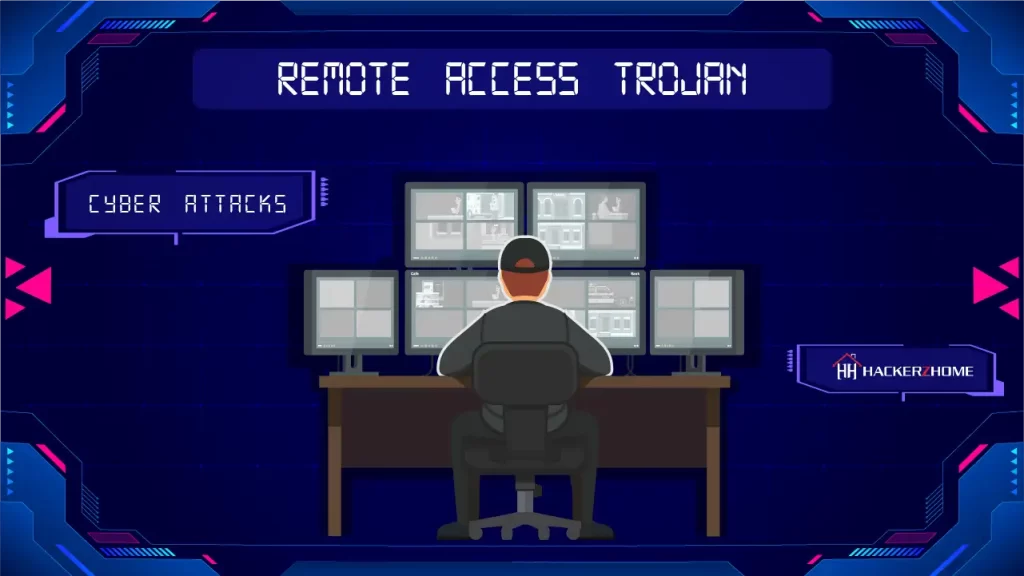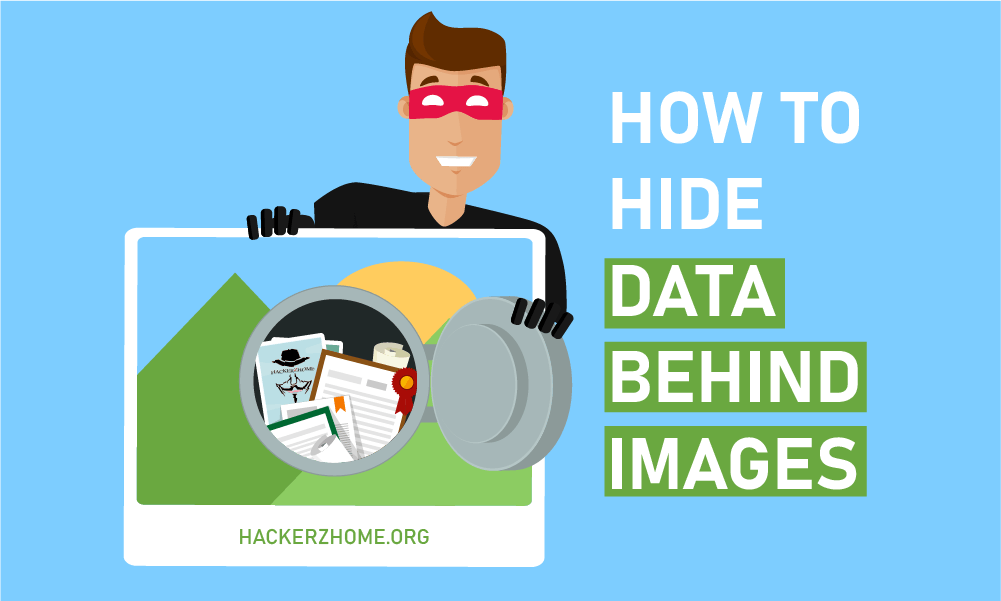Introduction:
Welcome back hackerz! This article series of hackerzhome covers all the basics of ethical hacking/cybersecurity that a beginner should know. As this is a continuation, we will talk about malware in this article.
There are different types of malware out there that can adversely affect your computer. This article will discuss the most common types of malware and what you can do to protect yourself from them. By knowing about malwares and taking these simple steps, you should be able to keep your computer safe from any malicious software.
Malware
- Malware -> Malicious + Software
- Malicious software is the abbreviation of malware – a general term for a wide range of computer viruses.
Malware is a type of software that can secretly damage or harm your computer. It may hijack your browser, install malicious programs, or steal your data. Some malware may be disguised as a legitimate file, and some may use social engineering tactics to gain access to your personal and confidential data.
There are many different types of malware, but the main goal of most types of malware is to steal information or disrupt your work. At first, malware typically tries to invade your computer by infecting your device with a virus or Trojan horse. Once installed, the malware will start spying on you and collecting information about your online activity.
Some malware also tries to steal your money by installing fake security apps and websites. Finally, malware can damage your computer by deleting files or encrypting your data.
If you think you’ve been infected with malware, don’t panic! There are many ways to remove it and protect yourself from further attacks. Keep an eye out for suspicious behavior on your device, and use caution when downloading files from untrustworthy sources. And always remember: if in doubt, reset your device!
How are Malware Created and Spread?
Malware is created by exploiting weaknesses in the computer systems on which it is installed. Malware can be spread through email, websites, or peer-to-peer sharing programs. In order for malware to propagate, it must first find a vulnerable system to install itself.
Once installed, the malware will attempt to exploit any security vulnerabilities it finds on the victim’s system to carry out its malicious objectives. Malicious files and scripts may be left running in the background, silently monitoring and stealing data from the user’s computer.
Types of Malware
Malware can take many forms, such as computer viruses, worms, Trojan horses, Spyware, etc. It’s essential for us to be aware of the different types of malware out there so that we can protect ourselves from it. Here is the list of a few types of malware:
- Computer Viruses
- Worms
- Trojans
- Spyware
- Ransomware
- Adware
- Rootkits
Computer viruses:
Viruses are small pieces of code/software that attach themselves to files on your computer and can exploit vulnerabilities in your computer system when activated or triggered. They can cause damage to your computer system and data, as well as steal information or even install additional malware on your computer.
Viruses are the most common type of malicious software and can spread from one machine to another. They can spread through removable media (like USB drives), email attachments, or online downloads. When you open the infected file, the virus will start to infect your computer and replicate itself. Most viruses are designed to attack Windows PCs, but some target Macs and other platforms as well.
Worms
Worms are similar to viruses in that they can damage or destroy your computer and can spread from one machine to another but the difference is they need not be triggered or activated.
worms are specially designed programs that can travel through networks instead of being downloaded only from the internet. they can consume large amounts of resources (such as bandwidth) on infected systems, leading to potential denial-of-service attacks. Hence it can cause major damage if left unchecked!
Also Read: How to Remove Malware from Android
Trojans
Trojan horses are a type of malware that masquerades as legitimate programs or files. They look like harmless files but are actually designed to carry out malicious commands on your computer.
Trojans can be disguised as helpful programs such as updates or security tools, Which leads you to install them without realizing it. For example, they may be hidden in PDFs, pictures, and especially in Mod software/applications, you download from the internet. They may look like the actual PDF/Software that you need but have trojans attached to them.
Once you download those PDFs or Mods, The trojan malware will also get downloaded along with the file and will start to take control of your computer and carry out malicious commands on your computer.
Spyware
Spyware is a type of malware that tracks and collects your online activity and transmits this data back to the person who installed the spyware on your computer. It can be installed on your computer without your knowledge, or it may be included with legitimate software you download from the internet.
The Spyware can track everything like what websites you visit, what emails you send and receive, what files you open, and even what words you type in a browser. This information can be used for identity theft and other malicious purposes.
Spyware can also monitor the activities of the user in real time so the attacker can watch and track everything LIVE. Once spyware is installed on your computer, it’s often very difficult to notice.
Ransomware
Ransomware is a type of malware that encrypts data on a user’s computer. Once the files have been encrypted, the hackers will typically demand a ransom(Money) in order for users to regain access to their data. Ransomware can be difficult to remove and can cause significant damage to computer systems if not paid off quickly.
There are several different variations of ransomware, including those that delete files if you don’t pay the ransom, those that target specific files, and those that display fake security warnings until you pay the ransom.
The most common types of ransomware are file-encrypting viruses, which infect Windows PCs, and lock-screen scams, which install malicious software on victims’ devices that displays a message demanding money to unlock the device.
Adware
Adware is a type of malware that displays unwanted advertisements on your browser. It can also collect information about your browsing habits and send this information to the creators of the adware program.
Using the adware, the developer places ads on the victim’s computer and gets revenue. If you are concerned about adware on your computer, you should remove it using an anti-virus program or ad-blocker extensions.
Rootkits
Rootkits are one of the common types of malware. They’re small programs that reside on your computer’s operating system (OS), allowing attackers to gain root-level access to your files and systems.
Rootkits can prevent detection by antivirus software, system management agents, and other security software and can gain complete control over an operating system.
Many rootkits install a backdoor giving an attacker remote access and complete control over the computer.
Preventions:
Here are some tips to help protect yourself from malware infection:
1. Keep your software up-to-date. Most malware exploits security vulnerabilities in old versions of software, so always update your programs to the latest versions. This includes your operating system, browser plugins, and applications.
2. Use a security suite. A security suite combines antivirus protection with other features such as firewall protection and identity theft protection. They’re a good way to stay protected against all types of malware, but they cost money.
3. Use common sense when online. Don’t open email attachments from people you don’t know, don’t click on links in unsolicited emails, and be careful about what you download from the internet (including software).
4. Protect your privacy. Keep all personal information secure by not revealing too much information online (such as your username and password) and using strong passwords for all important accounts.
5. Back up your data regularly. If something happens that causes your computer to stop working properly, make sure you have backups of all your important files before trying to fix it yourself.
Conclusion
We sincerely hope that this article about malware is really useful for you all as we expect you to stay aware of malware and its types. Comment below if you have any doubts regarding this post and also we welcome your suggestions on how can we do better. In the upcoming articles, let’s dive into some types of attacks in ethical hacking. Subscribe to our newsletter so that you will get notified whenever we add a new post. Thank you!












6 Responses
Andriod hacking